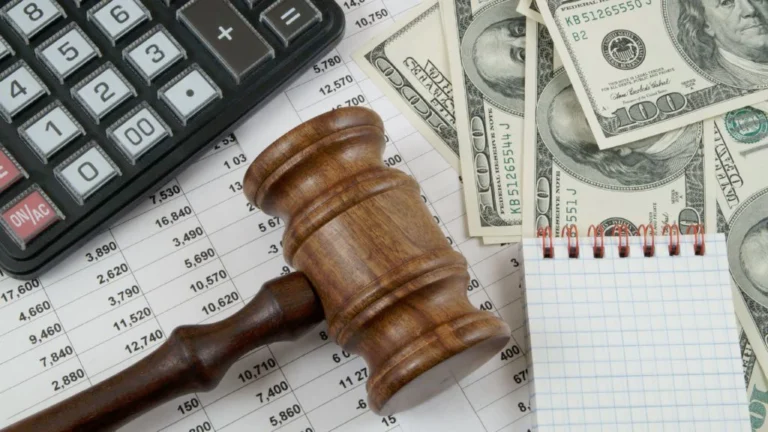Bankruptcy is often considered a last resort for individuals and businesses struggling with overwhelming debt. It offers a legal way to eliminate or repay debts under the protection of the federal bankruptcy court. However, the decision to file for bank-ruptcy is not to be taken lightly, as it can have long-term financial and personal implications. This guide will help you understand the basics of bank-ruptcy, including its types, the process, and what to expect before filing.
What is Bankruptcy?
It provides relief through either the liquidation of assets or the creation of a repayment plan, depending on the type of bankruptcy filed. Bank-ruptcy aims to give the debtor a fresh start while ensuring fair treatment of creditors. However, it comes with significant consequences, including a lasting impact on your credit score and financial future.
Types of Bankruptcy: Chapter 7, Chapter 11, and Chapter 13
The most common types of bank-ruptcy for individuals are Chapter 7 and Chapter 13, while Chapter 11 is typically reserved for businesses.
- Chapter 7 Bankruptcy: Known as “liquidation bank-ruptcy,” it involves selling non-exempt assets to pay off creditors. It’s best for those with limited income and significant unsecured debts like credit cards or medical bills.
- Chapter 13 Bankruptcy: This type is also called “reorganization bank-ruptcy” and is suitable for individuals with a regular income. It allows debtors to keep their assets while repaying debts over three to five years through a court-approved repayment plan.
- Chapter 11 Bankruptcy: Commonly used by businesses, this chapter allows companies to continue operating while restructuring their debts. It provides a chance to reorganize finances without liquidating assets.
Eligibility Criteria for Filing Bankruptcy
Eligibility for bankruptcy varies by type. For Chapter 7, you must pass a “means test,” which compares your income to the median income in your state. If your income is below the median, you qualify; otherwise, you may need to file under Chapter 13. For Chapter 13, you must have a regular income and unsecured debts below a certain threshold. It’s crucial to assess your financial situation carefully to determine which type of bank-ruptcy fits your needs.
The Bankruptcy Filing Process
Filing for bank-ruptcy involves several steps, starting with gathering financial documents such as income statements, tax returns, and a list of assets and debts. Next, you’ll complete mandatory credit counseling with a government-approved agency, usually within six months before filing. The actual filing includes submitting a petition to the bank-ruptcy court, along with detailed schedules of assets, liabilities, income, and expenses. Upon filing, an automatic stay is put in place, which temporarily halts most collection activities against you.
The Role of a Bankruptcy Trustee
A bank-ruptcy trustee is appointed by the court to oversee your case. In Chapter 7, the trustee’s primary job is to liquidate non-exempt assets and distribute the proceeds to creditors. In Chapter 13, the trustee will review your repayment plan and distribute payments to creditors as per the approved schedule. The trustee ensures that the bank-ruptcy process is fair to all parties involved.
Impact of Bankruptcy on Your Credit Score
Chapter 7 bank-ruptcy can remain on your credit report for up to ten years, while Chapter 13 stays for seven years. This can make it challenging to obtain new credit, loans, or even housing. However, with time and responsible financial behavior, it’s possible to rebuild your credit.
What Happens to Your Assets in Bankruptcy?
In bankruptcy, assets are classified as exempt or non-exempt. Exempt assets are protected and include necessities like your home, vehicle, and personal items up to a certain value, depending on state laws. Non-exempt assets, such as luxury items, additional properties, or valuable collectibles, may be sold in Chapter 7 to repay creditors. In Chapter 13, you typically get to keep your assets but must repay creditors according to your income and the repayment plan.
Costs Involved in Filing for Bankruptcy
Filing for bankruptcy involves various costs, including court fees, attorney fees, and costs for mandatory credit counseling and debtor education courses. Court filing fees can range from $300 to $400, while attorney fees vary significantly based on the complexity of the case and the type of bank-ruptcy. Although filing for bank-ruptcy can be costly upfront, it may provide significant long-term financial relief.
Alternatives to Bankruptcy
Before filing for bank-ruptcy, consider exploring other debt-relief options. Debt consolidation, debt settlement, or working directly with creditors to negotiate more manageable payment terms can sometimes provide the needed relief without the long-term impact of bank-ruptcy. Credit counseling agencies can offer guidance and help you develop a debt management plan tailored to your financial situation.
Preparing for Life After Bankruptcy
Life after bankruptcy requires careful financial planning and discipline. Start by creating a realistic budget, building an emergency fund, and gradually rebuilding your credit through secured credit cards or small loans with timely payments. It’s essential to avoid the mistakes that led to bank-ruptcy and to seek financial education to improve your money management skills. With time, dedication, and responsible financial behavior, it is possible to recover and build a stable financial future.
Conclusion
Bankruptcy can provide a necessary lifeline for those drowning in debt, offering a chance for a fresh start. However, it comes with significant long-term consequences that must be carefully weighed. Understanding the different types of bank-ruptcy, the eligibility requirements, the filing process, and the impact on your assets and credit score is crucial before making the decision to file. Exploring alternatives and preparing for life after bank-ruptcy can help ensure that your financial fresh start is truly successful.

